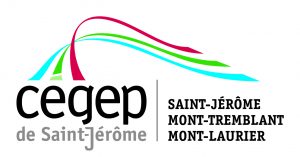From design to prototype, a successful challenge for IVI engineers!
The manufacturer’s main challenge was to obtain an electric prototype offering the same features and performance as the diesel model used by the Ville de Montréal. In addition, it was crucial that the new vehicle would meet certain key criteria, in order to stand out from the competition and to be attractive to customers.
First, the vehicle had to have a range that allowed it to work a regular shift without the need for recharging. To meet this requirement, a lithium iron phosphate battery (LiFePO4) was selected. It allows a range of up to 200 km and offers an average work time of 5 hours when the vacuum is in use. In addition, the vehicle can travel at speeds of up to 18km/h. An interesting feature is the 8.5 kilowatt propulsion motor, combined with a gearbox and differential axle that have been integrated to increase the vehicle’s torque. This means that the electric motorized vacuum litter collector can be used in steeper areas without difficulty.
A second requirement was that the prototype had to emit less noise in and outside the operator’s cabin in order to reduce noise pollution. By replacing the fuel engine with an electric motor, the noise reduction has been significant. In this regard, sound meter tests revealed that noise was decreased from 92 decibels to 84 decibels, when the litter vacuum was in operation. In addition, when the vehicle is only in motion, the noise level is almost non-existent.
Another essential requirement was that the recharging time had to be carried out in one night and that this operation should not require the installation of specific infrastructures in the various municipal workshops. To do this, the engineers chose to use a charging system that requires only two 120-volt plugs. As a result, the Madvac LR50 electric can be plugged in almost anywhere at the end of the day and will be ready for use the next day.
Finally, the prototype also had to be 100% electric. As Guillaume Fournier, P.Eng. who worked on the project, points out,
“it means designing a fully electric motorized vacuum cart without any hydraulic components, which was a good challenge for the team.”
This is where the prototype developed by IVI and Exprolink-Madvac stands out, because the vehicle and arm are completely electric. To achieve this, the engineering team used CANBus-controlled electrical actuators. The results are highly successful.
Pierre-Luc Lapointe, P. Eng., also adds that
“the choice of this architecture, although more complex during the design phase, has reduced the space requirement in the vehicle, increased its efficiency and reduced assembly time, all of which will allow Exprolink-Madvac to be more competitive”.
Fluidity and ease of control for operators are also guaranteed. This fluidity is mainly explained by the fine control of the travel speed of the 3 actuators, which allow movements from left to right, from top to bottom, and from front to back.
Exprolink-Madvac, an innovative Quebec business!
IVI is proud to collaborate with companies like Exprolink-Madvac to help them develop emission-free vehicles that have positive economic and social impacts for Quebec. It should be noted that this project, to test 100% electric vacuum litter collector with the City of Montreal, is a first step towards worldwide commercialization of the product. In addition, the last few months of work have been fruitful, as the new electric Madvac LR50s will soon be deployed in the various districts of Montréal.
According to Philippe Saint-Vil, Head of the Planning and Operations Support Division at the Rolling Stock and Workshops Department of the City of Montréal, this type of successful collaboration is a success story for all suppliers, subcontractors and players in the electrification sector in Montréal and Québec. In this perspective, he stated that
“The City of Montréal wants to be a leader in North America in the electrification of municipal vehicle fleets, while actively contributing to the development of the electrification sector in Quebec. The completion of this first project, which is part of the City of Montréal’s 100% electric prototype acquisition and experimentation program, is part of this approach and demonstrates the success of the collaboration between Exprolink-Madvac and IVI”.
There is no doubt that the future looks bright for Exprolink-Madvac. Louis-Martin Durand, Vice-President, Business Development, explains that
“the company plans to electrify another model in the near future, in collaboration with IVI and that it intends to convert the entire Madvac product line in the coming years.”



